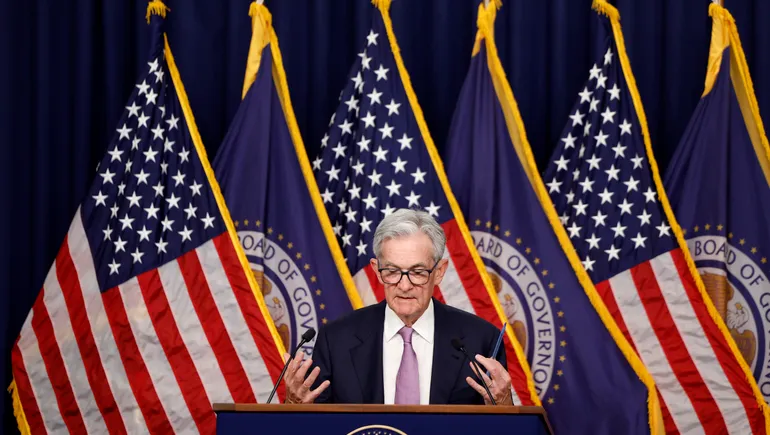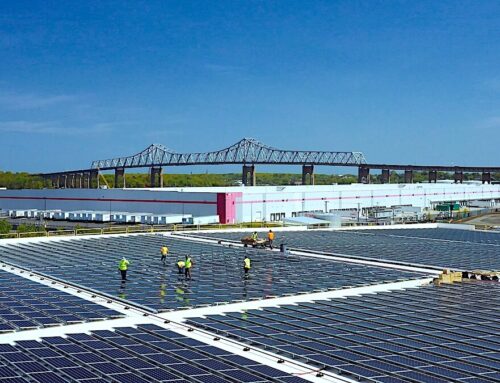Clean energy a ‘big winner’ as Fed cuts interest rates more than expected
September 19, 2024

Dive Brief:
- The Federal Reserve’s Wednesday announcement of an interest rate cut of 0.5%, or fifty basis points, will provide a boost to the developers and sponsors of renewable energy projects, analysts say.
- “High interest rates have had a significant negative impact on the renewable energy sector since the Fed began raising rates,” said Raj Prabhu, CEO of Mercom Capital Group. The rise in rates “slowed or stranded large-scale renewable projects …. With the rate cut, these projects can become viable again.”
- The beginning of a cutting cycle “will jumpstart projects,” said Mona Dajani, partner and global co-chair of energy, infrastructure and hydrogen at law firm Baker Botts. “They’re very sensitive to the cost of capital, particularly for capital-intensive technologies like offshore wind, clean hydrogen, carbon capture, and solar [plus] storage.”
Dive Insight:
The initial cut was also deeper than anticipated, Dajani said, noting that a cycle doesn’t usually start with a cut of fifty basis points.
“I think that’s a good indicator, like putting your money where your mouth is,” she said. “The market was expecting 25, but it felt good. It’s huge. And I think that as a whole, clean energy is one of the big winners.” The cut brings the Federal Reserve’s benchmark interest rate down to a new range of 4.75% to 5%.
The cut “was certainly larger than consensus,” said Raymond James Senior Equity Research Associate Graham Price. Price noted that he hasn’t seen the cut impact Treasury rates yet – the yield for ten-year treasuries is up slightly, he said, “and that’s what a lot of the lending rates for various parts of [clean technologies] are based on.”
Price hasn’t seen the stock prices for “interest rate sensitive names” like residential solar giants Sunnova or Sunrun react much yet, either. However, “a few months ago, Sunnova was $4 a share, and now it’s about $12,” he said, which may indicate that the anticipated rate cut was priced in before the Fed made its announcement.
Price expects that the Fed’s rate cutting cycle will have its biggest impact on renewable energy businesses that rely heavily on consumers, like residential solar installers, but will also have a significant impact on “offshore wind and anyone who’s project-based – who carries a balance sheet and could fall into a long-duration asset bucket.”
DBRS Morningstar Vice President of Project Finance and Infrastructure Kevin Beicke said he thinks that offshore wind development in the U.S. would continue either way thanks to federal and state goals, but “lower financing costs will only help in the process,” and the economics of offshore wind projects under development will improve with rate cuts.
The U.S. offshore wind industry struggled in 2023 thanks to several macroeconomic factors including high interest rates, inflation and supply chain difficulties. The residential solar industry has also been impacted by the 23-year high in interest rates, with major solar installation company SunPower declaring bankruptcy last month.
Price said interest rates impacted SunPower more than its competitors Sunnova and Sunrun because SunPower was “more heavily reliant on solar financing from loans versus third party options that include leases and PPAs,” which made the business more vulnerable to how high interest rates were affecting its customers.
Prabhu said that with the rate reduction, consumers can now reconsider financing installations of solar and storage, and also said he hopes that this cut will revive activity in mergers and acquisitions, which “slowed drastically over the past two years due to high borrowing costs.”
“The residential solar market has really been battered lately, and I do think [the cuts are] going to help tremendously,” said Dajani. She said she sees this cut as a sector-wide win, as “this whole space is very interest rate-sensitive,” and contains a lot of dry powder, or capital that has been committed but not yet allocated to an investment.
“I’m excited for my clients, a lot of whom are sponsors and investors who are eager to get their projects off the sidelines,” she said. “A lot of renewable energy projects require significant upfront capital — a higher portion of the costs are in building [them], as opposed to operating them.”
The market is predicting the Fed cutting by 100 basis points by the end of the year, Dajani said, “and this would make it easier to expand the domestic supply chain for clean energy. It would make it easier to finance and build new factories for solar, batteries, EV and wind.”
Dajani noted that a lot of economic factors are still dependent on the result of the upcoming presidential election, though she said she doesn’t think there will be “significant material changes to the [Inflation Reduction Act]” either way.
Price agreed that the general view is that key components of the IRA like the Section 45X advanced manufacturing production credit are safe, barring a “very drastic outcome like a strong red sweep.”
However, he said, “I think — especially on the utility-scale side — a lot of guys are waiting for the election. Not that they’re necessarily afraid of any particular outcome, but they just need certainty over what will happen. There’s little downside to just waiting another two months and seeing exactly how things play out.”
Search
RECENT PRESS RELEASES
Related Post



